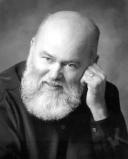Mindfulness
Mindfulness and Peacemaking, Part 2
All in the present moment.
Posted September 27, 2017
Part 2 of 2
Finding Peace in the Present Moment
In her book, Boundless Heart, the meditation teacher Christina Feldman writes: "I have come to feel that the shape of each person's life and sense of self is determined by their relationship to pain and suffering. If we fear suffering and pain, we will engage in a life of perpetual agitation dedicated to devising strategies to avoid pain."
Someone once said to me: "Dr. Brantley, so now I am more mindful, I am more aware of feeling my pain, of feeling anxious and afraid, how is that helping? I am more upset! Where are my peace and ease? What should I do now?" I replied: That is a very good question! I have asked it myself of my own teachers. The response always comes down to this: Be more mindful.
How might experimenting with this advice work? Here is one way.

Recognizing when pain or emotional upset is present, instead of reacting quickly and defensively, or immediately making it personal, something happening "to me," pause and try shifting perspective. Trust and turn to your mindfulness practice to steady yourself, and take the position of awareness, even if only briefly. Experiment with looking more closely, more deeply, at what is happening within you, and around you. Wherever the touch of your attention falls, let it rest in awareness, with kindness and respect.
For example, if you are noticing feelings of pain, or anxiety and fear, can you stay present with gentle attentiveness, abiding in awareness, and return to awareness when your mind wanders? Recognizing the presence of a strong emotion within, anchoring attention on your breath sensations and remaining present, can you look more closely, noticing and investigating any bodily sensations that are accompanying and associating with the thoughts forming the emotion? What thoughts fuel the emotions? Are there rigidly held beliefs upholding the upset you are feeling? Are the beliefs adding suffering to the pain you feel? Can you identify them with awareness? Are they accurate? If not, can you let the thoughts go? Can you notice your reactions to the feeling of discomfort associated with pain, anxiety, or fear? Is the arising reaction to the discomfort, or to the emotion itself, more fear, angry blaming, or more pain and confusion?
And, with practice, can you mindfully investigate any responses that might help shift out of the experience of suffering, of multiplying the pain you are feeling? In this moment what happens when pausing longer to be mindful; are you accurately recognizing danger and taking steps to be safe and to feel more ease? Are you more able to meet the pain you are feeling with wisdom and compassion instead of criticism? Are you cultivating the qualities of compassion and kindness to care for the pain you meet or are holding?
This talk of the transforming power of awareness is not a theory. It can be verified through your direct experience. However, practicing mindfulness is not always easy, and it can take real courage and faith in yourself as already possessing enough mindfulness and compassion to deliberately choose to take the view from awareness. There is no pressure, though. You can take your time. Experiment and see for yourself. Does the direct experience practicing mindfulness and compassion really help? Is it true that the awareness of upset is not upset? Or that awareness is not stuck in, but recognizes, the habitual and conditioned mental and emotional reactions to upset? Does resting in awareness provide the refuge of stillness and ease, and the possibility of responding wisely, instead of being lost in the habits of the past, so that future situations and relationships can be more peaceful and less warlike?
Some brief mindfulness practices:
Because direct experience is the best teacher, here are some brief mindfulness practices that you might experiment with. Let any understanding, peace, and ease you find guide your next choices for action as you face the ordinary and difficult moments in your life with more mindful moments.
And, it is most helpful if you approach these practices without trying to make anything actually happen, or make yourself feel anything special. Simply experiment with the practices and see for yourself.
1. At times when you are not feeling stressed or upset, make a choice to explore the dimension of awareness, and the present moment perspective more consciously. Establish the intention to inhabit the body and this moment wholeheartedly with awareness, if only for a few breaths, as you are sitting quietly, lying down or moving about. Gathering your attention in the present moment, on your body, gently focus attention on the spectrum of bodily sensations present and moving through awareness. You do not have to do anything—just allow yourself to be with and to know the changing sensations, noticing the felt experience of being in your body as it is in this moment.
Besides bodily sensations, you might notice sounds, thoughts, or mind-states like excitement, anger, or sleepiness. Your practice is to rest in awareness, noticing and allowing all of these various conditions to come and go. Sensing any places of tension, holding, or discomfort in your body, allow your kind awareness to touch those places, noticing but not interfering with the changing sensations, and observing how the intensity shifts, or fades. When you find yourself caught or reacting to the passing contents of mind and emotions, you have not made a mistake. Simply notice that moment, steady attention, and allow thoughts or emotions to come and go without fighting or feeding them. Returning repeatedly to gentle attentiveness, for the time of the meditation at least, observe and regard all thoughts, bodily sensations, and emotions simply as changing, temporary conditions moving through awareness in the present moment. If it helps, practice with steadying your attention on a more narrow focus, paying close attention to the breath sensations, or the sensations in your feet as you walk, for example. Practice resting in awareness, steadying attention, and noticing the flow of conditions for as long as you wish.
2. At times when you feel upset or distress, first, make sure you are physically safe. Then set your intention again to explore the realm of awareness and its power to promote peace and ease, and to guide skillful action in difficult moments. If it helps, steady yourself in awareness by focusing more closely and anchoring attention on a bodily sensation like the breath. Return attention to the anchoring bodily sensation with kindness and determination whenever you find yourself being swept up in reactions to the difficult situation. Throughout the entire practice, cultivate an inner listening, with kindness and compassion, to the life of your body, heart, and mind. Making the whole of your felt experience the focus of attention, notice and allow all of the thoughts, emotions, and bodily sensations to be just as they are as they appear, change, and fade in your field of awareness. Not caught up in fixing anything or changing anything, gently recognizing—in the view of awareness—how all conditions arising in mind and body change, are temporary and not personal.
3. Noticing, allowing, and caring for any stress or upset you are feeling or pain you are experiencing, you might also experiment also with directing compassion towards yourself in the midst of a moment of distress. Mindful of the presence of difficulty or feelings of upset, deliberately choose to wish yourself well—in that moment. Acknowledging your own distress, imagine speaking to yourself with the same warm care and concern you would show towards a friend in pain or one in danger. Breathing mindfully, you might whisper and continue whispering to yourself a phrase like: "In this moment, may I be safe and protected. May I be well. May I live with ease and kindness." Letting mindful breathing anchor you in the present moment, and in awareness, continue mindfully offering yourself safety, ease, and well-being using these or other phrases. What do you notice happening in your mind, heart, and body as you practice?




